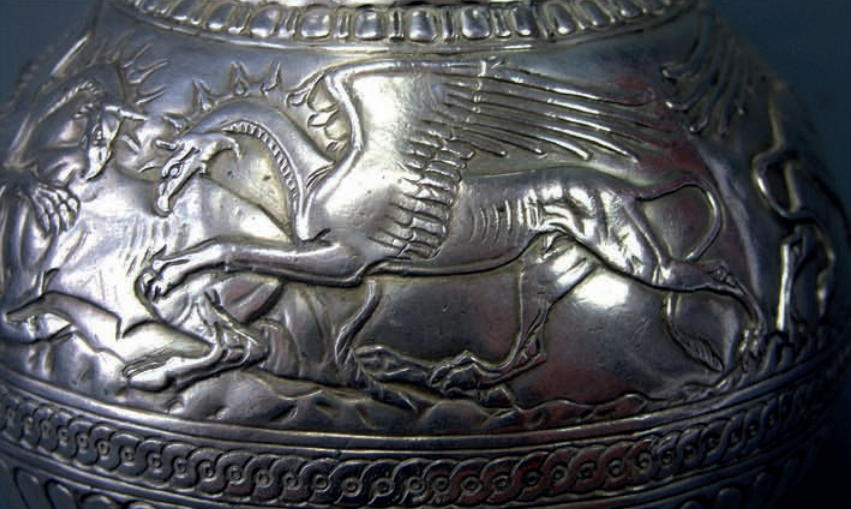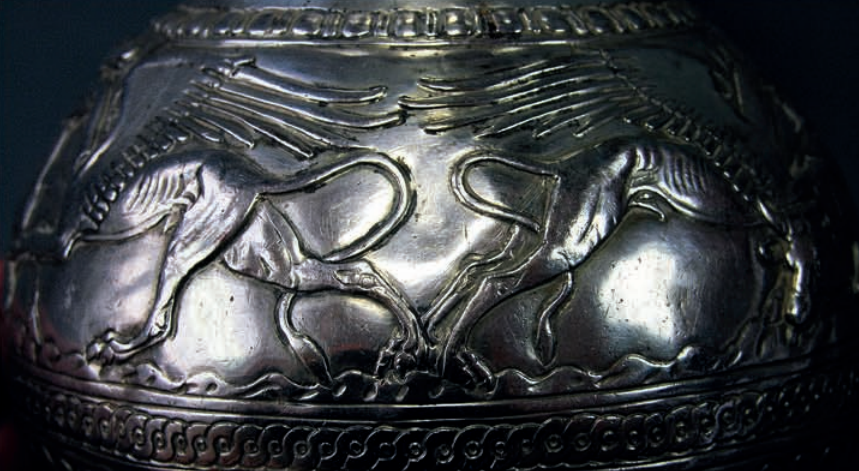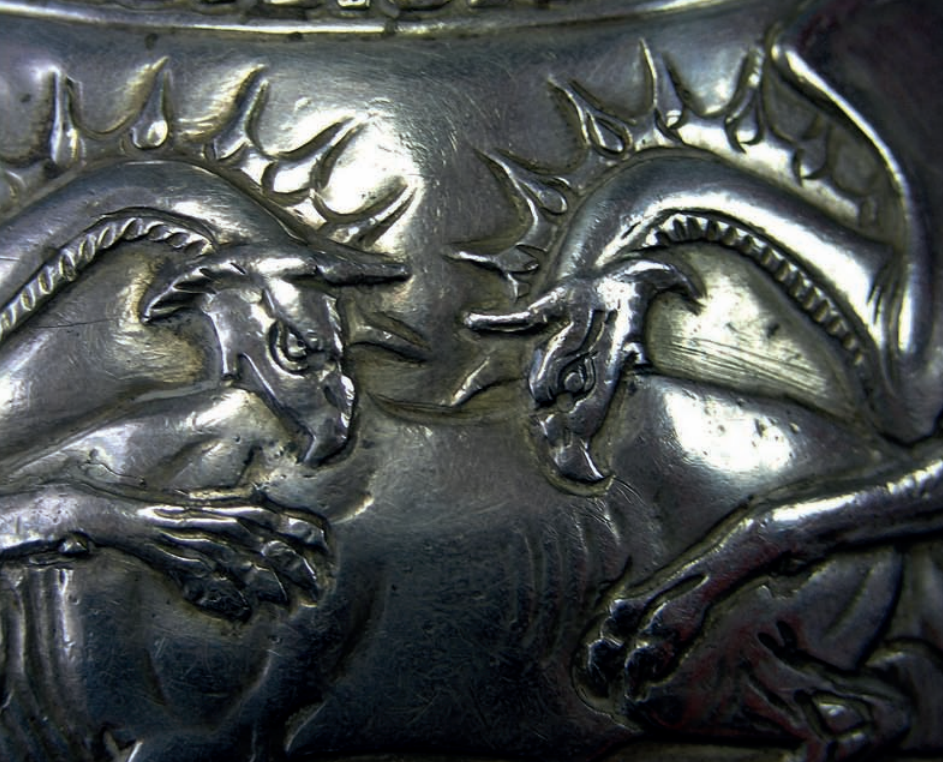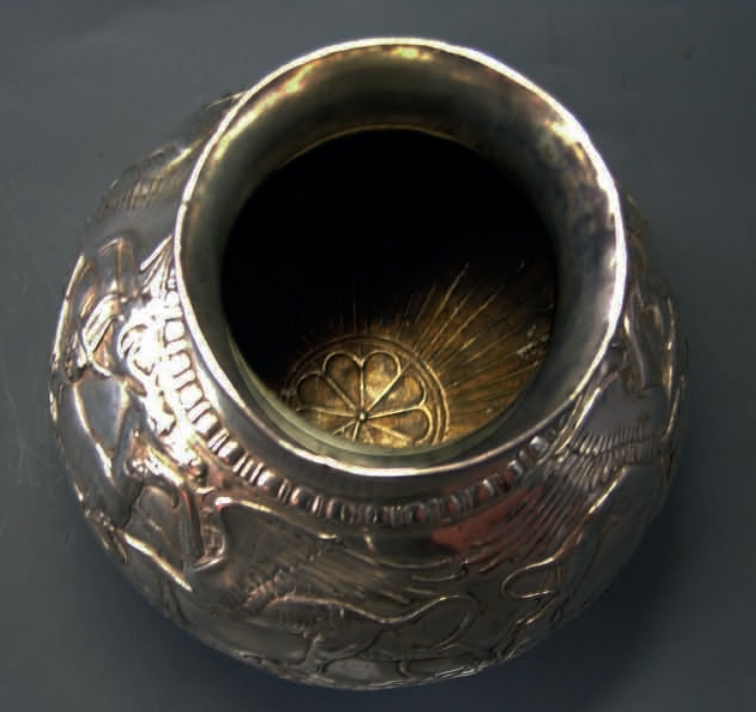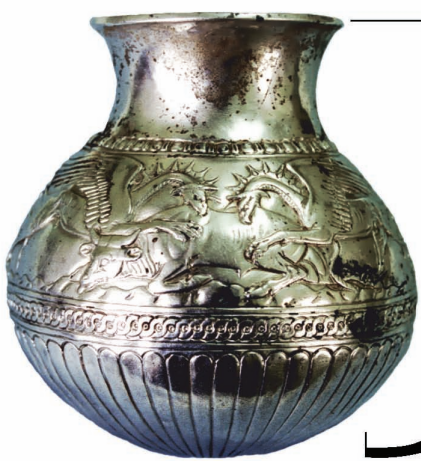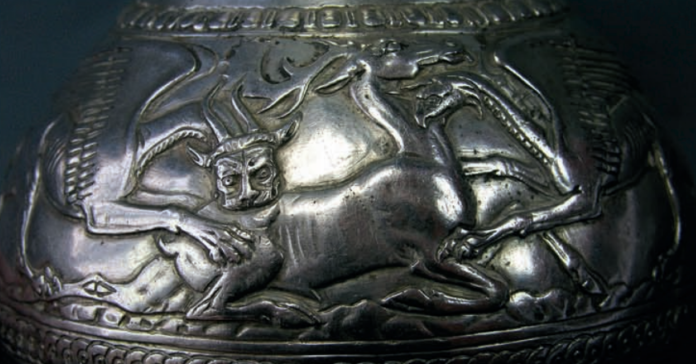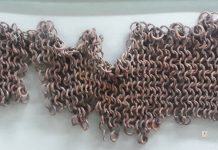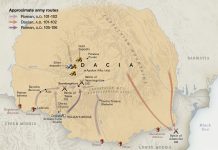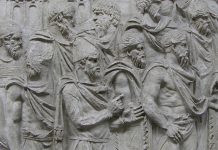The frieze vessel was found in the same chamber as the priestess. In the first scene, one lion-headed and one eagle-headed griffins tear a deer. In the second scene, two eagle-headed griffins tear a bull. Such motifs had not been known on similar-shaped vessels. The motif of a deer being attacked by one or two eagle-headed griffins was popular in southern Italy, Greece, Macedonia, and the northern Black Sea area in the 4th century B.C., but the presence of a lion-headed griffin appears to be unique in such an art. Besides, the lion-headed griffin has horns just like the griffin on the reverse of the Pantikapean stater that was worn as a finger-ring by the Priestess from the same Great Ryzhanovka Kurgan.
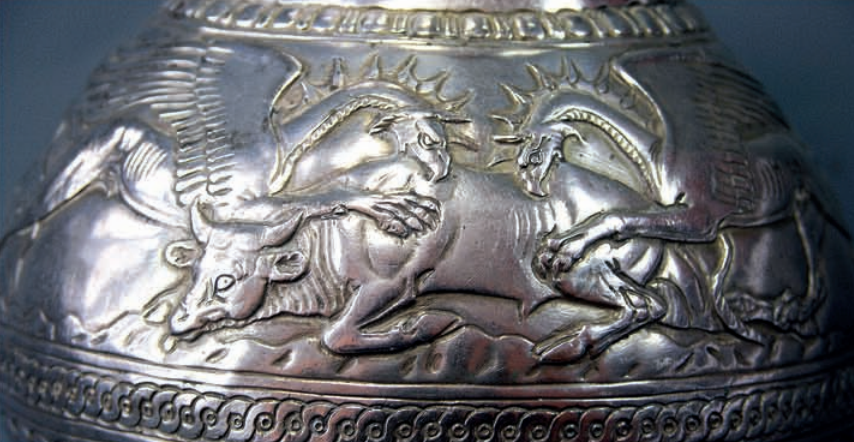
The second scene of the two griffins tearing a bull was not known in the toreutics of the Scythian style. The only similar motif of an eagle-headed griffin attacking a bull from behind is present on a recently discovered marble gable in the area of former Phanagoria in the eastern part of the Kerch Strait.
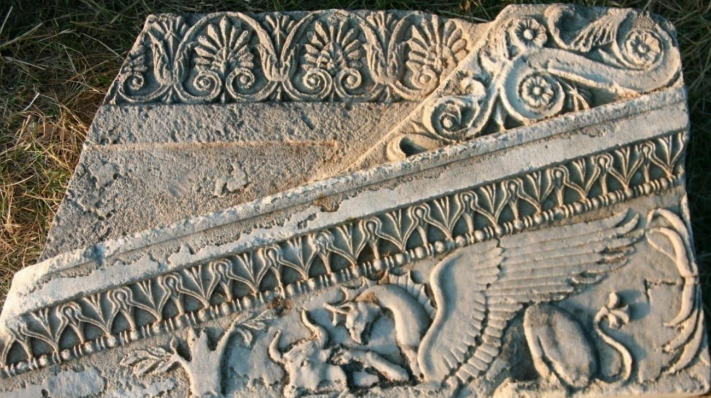
The maenads on the ritual headdress, the staters on the finger-rings, the griffins, and the scenes on the vessel from Great Ryzhanovka Kurgan show the close ties of the Scythians who lived in the area of present-day Kyiv with the realm of the Scythians of the Bosporan Kingdom in the present-day eastern Crimea and Kuban.
It can hardly be a coincidence that some of the symbols of the Scythian world, such as Trident became the symbols of Kyiv Rus. “Royal Scythia, Greece, Kyiv Rus” has many more insights into the subject.
